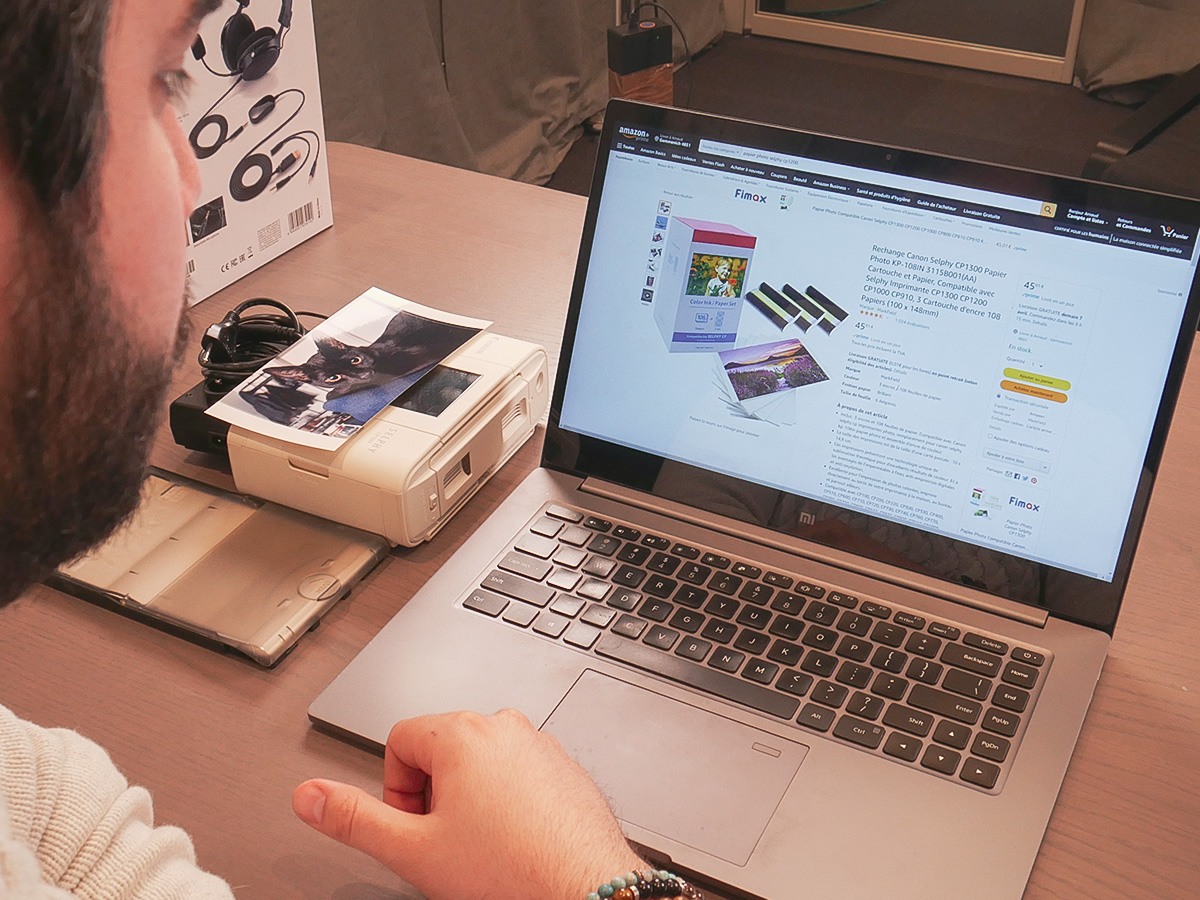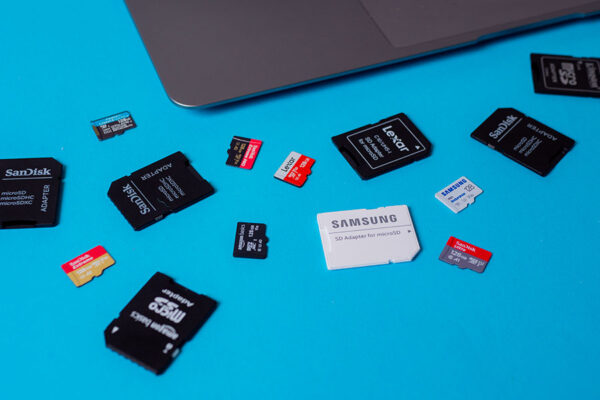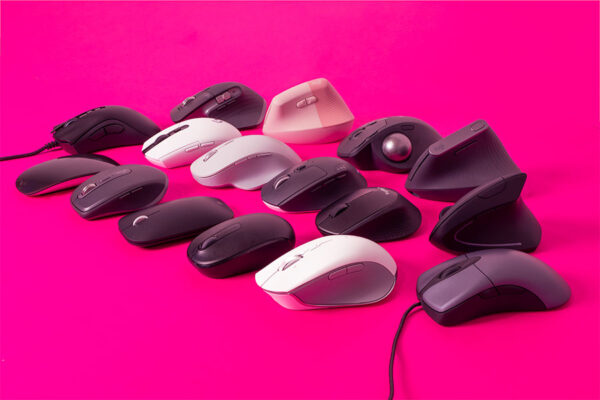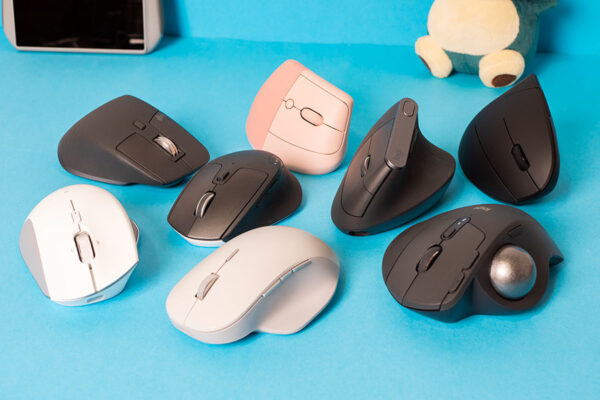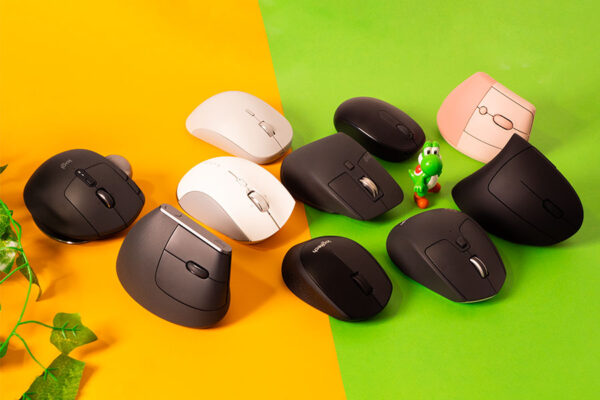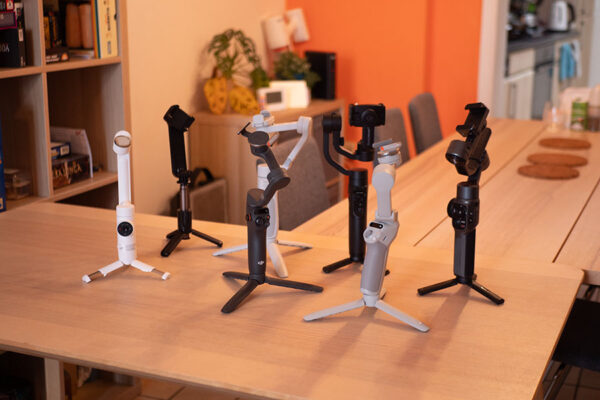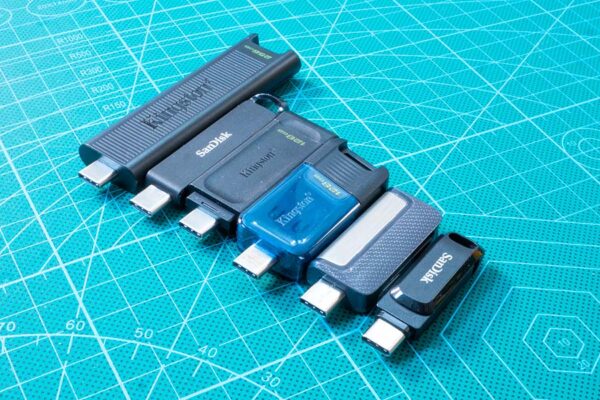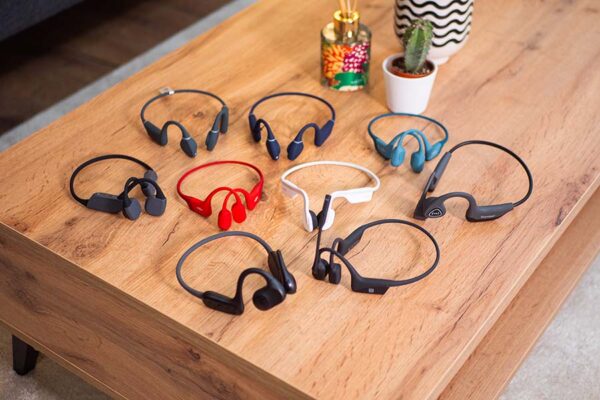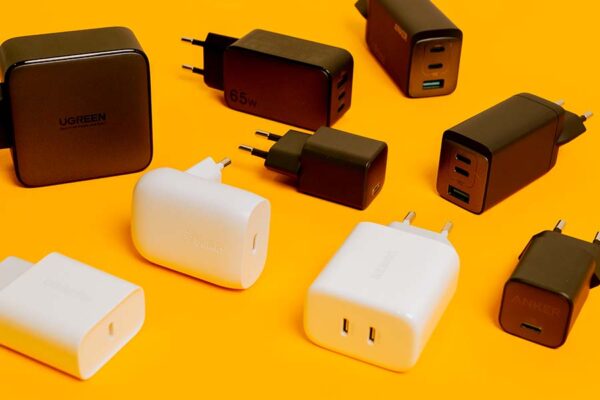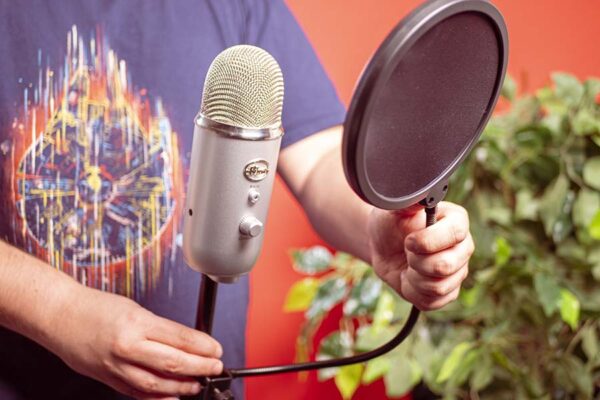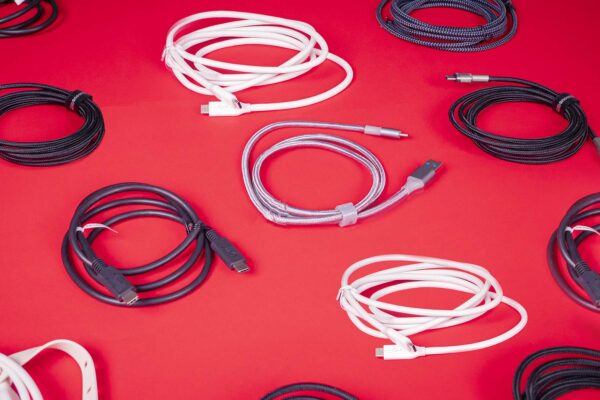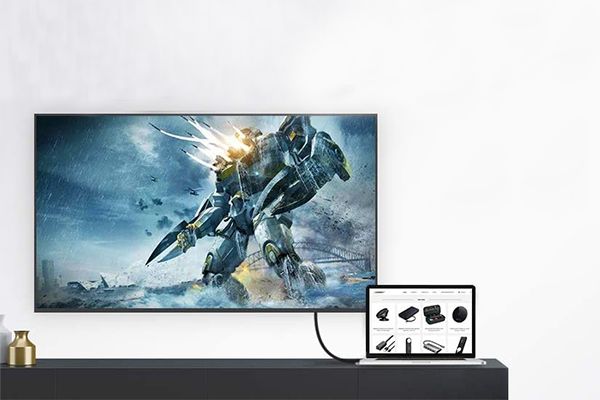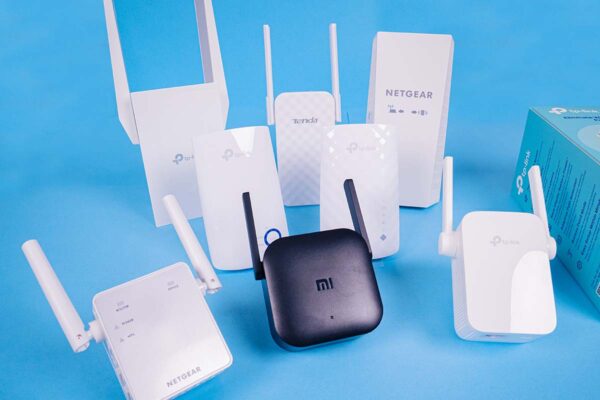Updated on August 25, 2023
Fujifilm Instax Link Wide
In addition to its impressive autonomy and attractive rendering, its printing and developing speed is fast. We also appreciate the size of the photos, the application options and the few accessories supplied.
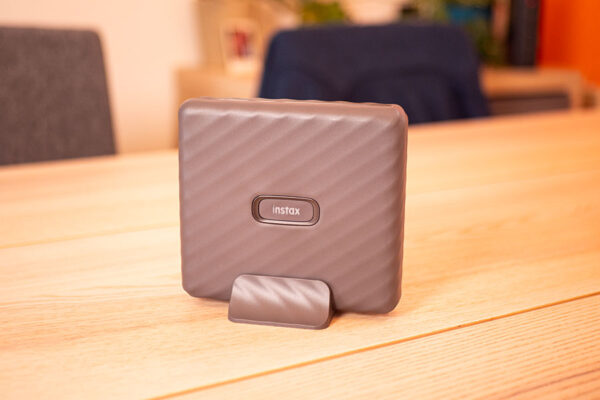
its rechargeable battery via micro-USB offers excellent autonomy (up to 100 photos, with a charging time of between 80 and 120 minutes). In terms of print quality, although tones and colors are a little warmer than on the smartphone image, Fujifilm offers convincing results and satisfactory sharpness here.
During our test, printing was very quick (15 seconds) and images took around 3 minutes to develop. Its design is easily transportable, even if it is a little heavier and bulkier than other pocket models. As a result, Wide Instant films are larger in size (10.7 x 8.5 cm). A border allows you to add a caption below the photo, which slightly reduces the size of the photo (9.8 x 6.2 cm).
On the other hand, the paper is not self-adhesive and no film is supplied with the purchase of the machine. Moreover, the cost per photo is high (€0.95 to €0.99). The compartment has a capacity of 10 films, and we found it easy to fill using the flap latch.
The Instax Link Wide app was pretty straightforward to get to grips with. It indicates the number of films remaining, and offers creative functions (stickers, collages, greeting cards, filters, retouching, etc.), like the addition of QR Codes that link to a location, a message, an audio recording or even a website. Even so, the automatic cropping applied to photos is a little disturbing. Finally, you get a printer holder and a wrist strap.
Fujifilm Instax Share SP-3
Despite its high cost, it’s the best in terms of performance, in terms of print results, endurance and printing speed. Only the application and connection can be improved.
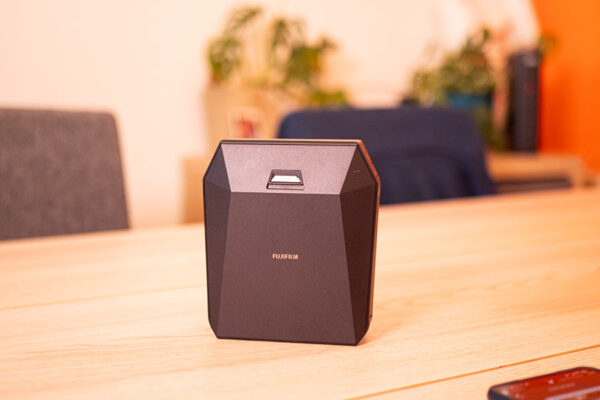
It runs on a Wi-Fi network and a rechargeable battery via micro-USB, and offers the longest autonomy of this comparison (160 photos) for a logically longer charging time (3 hours). We also found it to offer the best print quality, with excellent sharpness and fairly faithful colorimetry (although some retouching is required for certain images).
In addition, printing is very fast (around 15 seconds) and allow around 3-4 min for developing. The paper compartment admits up to 10 films, and is easily refilled by pressing the latch on the flap. The machine and application indicate the number of films remaining. Refills are the same as for the Instax Square, and the paper measures 7.2 x 8.5 cm for a square image (6.2 x 6.2 cm). There’s a border for a caption. Note, however, that the photos are not self-adhesive, that no paper is supplied with purchase and that the print is expensive (€0.90 each), adding further costs to this already expensive machine.
Design-wise, it’s a little heavier than other models in our selection, but it’s still easily transportable. On the other hand, during our test, we found the Instax Share application a little slow, and although it offers a few options (real-time photos, collages, etc.), it’s less feature-rich. What’s more, we sometimes had problems with disconnection and pairing under Android.
Fujifilm Instax Mini Link 2
Its compact, lightweight format, excellent battery life, satisfying results, fast printing, and above all, an application rich in fun features make it one of the best models on the market.
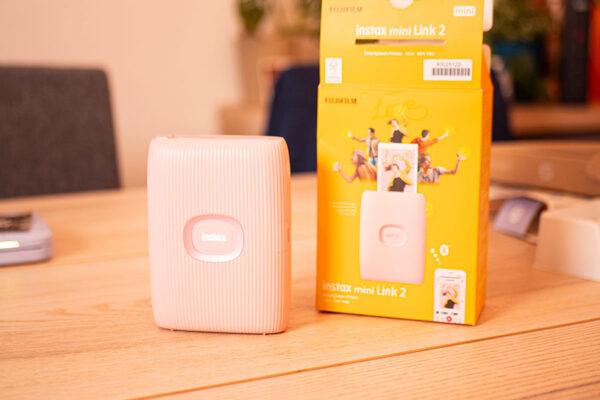
This lightweight photo printer has a pocket format that makes it easy to carry. It is powered by a rechargeable battery via micro-USB, offering excellent autonomy (100 photos). Charging time is estimated at between 80 and 120 minutes.
As far as results are concerned, we were generally satisfied with the photo quality offered by this machine. Indeed, the level of sharpness is convincing and darker photos were rendered very well, but the colors of lighter photos remain a little dull compared to the smartphone photo in our opinion.
Printing takes just 20 seconds, and it takes about 5 minutes to develop. The cartridge is easily inserted into the lockable paper tray. Instax mini films, on the other hand, are quite small and have a border of inscriptions, which further reduces the size of the images. What’s more, they’re not self-adhesive, no film is supplied on delivery and the film is quite expensive (around €0.85 each).
After a simple pairing via Bluetooth, you access its intuitive Instax Mini Link application. This shows the number of films remaining in the tray. During our test, we had a lot of fun with the app as it offers so many entertaining features, including compatibility tests and AR print mode with QR Code to link images to a video and many other options for personalizing your photos.
Fujifilm Instax Square Link
It enjoys great autonomy and offers fast printing with more convincing results. Its application functions also leave plenty of room for creativity.
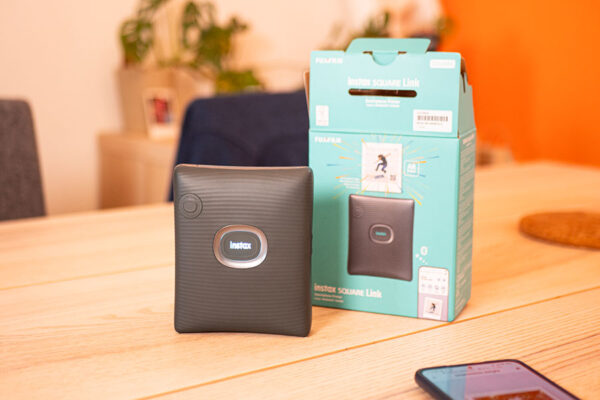
This square-shaped, transportable printer is powered by a rechargeable battery via USB-C and boasts a long battery life (almost 100 photos). It works much like an instant camera.
During our test, we appreciated its good print quality. Admittedly, tones and colors are slightly warmer than on the smartphone, but sharpness is correct and the result is overall convincing compared to other models. What’s more, printing is very fast (less than 20 seconds), as is photo development (less than 2 minutes).
its compartment admits only Instax Square paper and has a 10-sheet capacity. It opens easily thanks to the flap lock. On the photo paper, there’s a handy white border so you can add a caption or note to further immortalize your memories. Unfortunately, no paper is supplied on delivery, and paper is very expensive per unit (€0.90 to €0.99).
The Instax Square Link application is simple and intuitive. On it, you’ll find the number of sheets remaining in the compartment, as well as a host of fun personalization options (stickers, filters, retouching, collages, video images, frames, drawings, text, effects, etc.), including AR Print mode, which lets you create content accessible via a QR Code accompanying the photo. Printing a photo from a video and sharing prints with your friends are also possible.
Our selection
Our pick, Best mid-range Best top-of-the-range Mid-range alternative High-end alternative 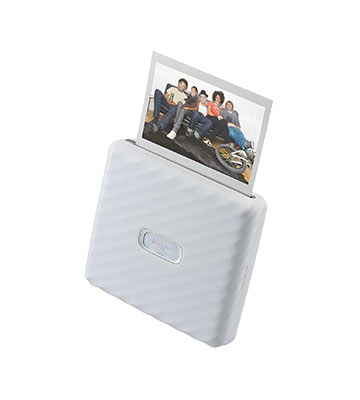
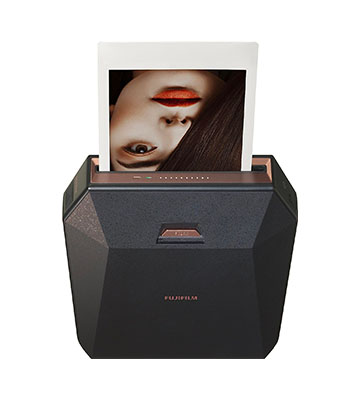
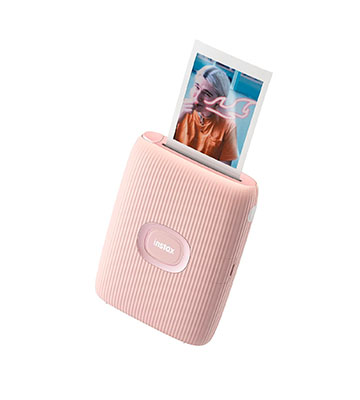
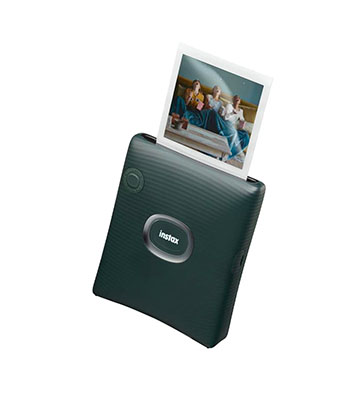
Fujifilm Instax Link Wide Fujifilm Instax Share SP-3 Fujifilm Instax Mini Link 2 Fujifilm Instax Square Link In addition to its impressive autonomy and attractive rendering, its printing and developing speed is fast. We also appreciate the size of the photos, the application options and the few accessories supplied. Despite its high cost, it's the best in terms of performance, in terms of print results, endurance and printing speed. Only the application and connection can be improved. Its compact, lightweight format, excellent battery life, satisfying results, fast printing, and above all, an application rich in fun features make it one of the best models on the market. It enjoys great autonomy and offers fast printing with more convincing results. Its application functions also leave plenty of room for creativity. £ 105.00 on Amazon £ 119.00 on Amazon £ 113.98 on Amazon £ 129.00 on Amazon
Selectos compares and tests hundreds of products to help you buy better. We sometimes receive a commission when you buy through our links, which helps fund our work. Learn moreWhy trust us ?
How did we test?
To begin with, we observed the design (size and weight, presence of LEDs, general ergonomics, buttons, etc.) of each model. ) of each model, the size of the photo film and images as well as the specifics of the paper (quality, durability, presence of borders, adhesive or not, etc.). The capacity of the compartment and the ease of recharging were also taken into account. Of course, the cost of paper per unit was calculated.
With regard to performance, on each device we printed the same 2 photos featuring different colorimetry (a sunset and a night landscape). Firstly, we recorded the printing time (and development time if necessary). Secondly, we checked the print qualityby observing and comparing color fidelity, sharpness level, contrasts, tones, etc.
Then we explored the application (creation options, functions, handling, etc.). ) and it also allowed us to judge the reliability of connection and pairing (with an Android smartphone and an iPhone). Finally, we evaluated the autonomy, the charging time and any accessories provided.
How to choose your portable photo printer
It’s always difficult to define a printer’s performance. On the one hand, because there are so many models on the market, and on the other, because they are designed for different uses. After producing a comparison of the best photo printers, we decided to focus here in particular on portable models.
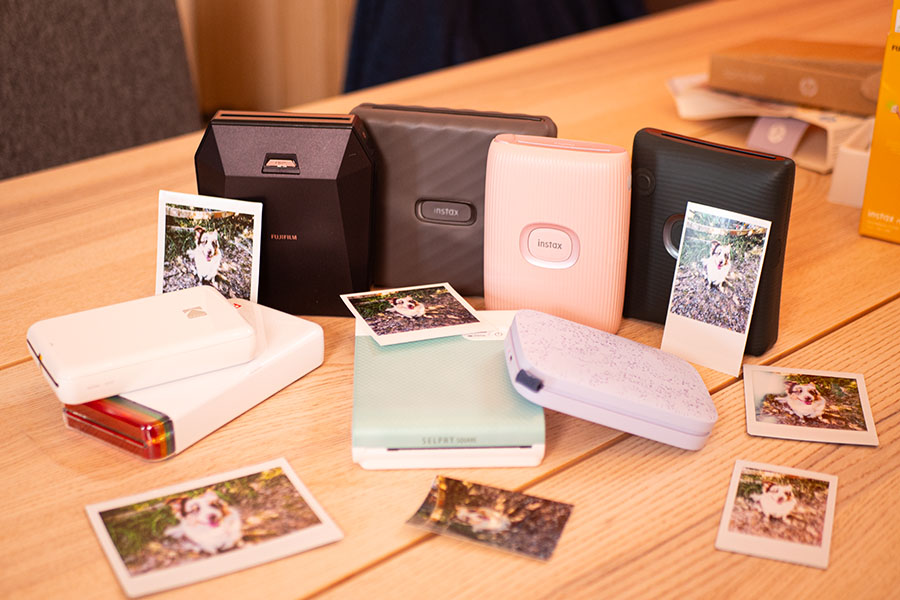
We’ve listed the features you should consider when making your choice:
- Ergonomics : the printer’s weight is essential for transporting it, as is its size. Its power supply is also not to be overlooked: a short cable that can power other peripherals can be a space-saver at the bottom of your bag.
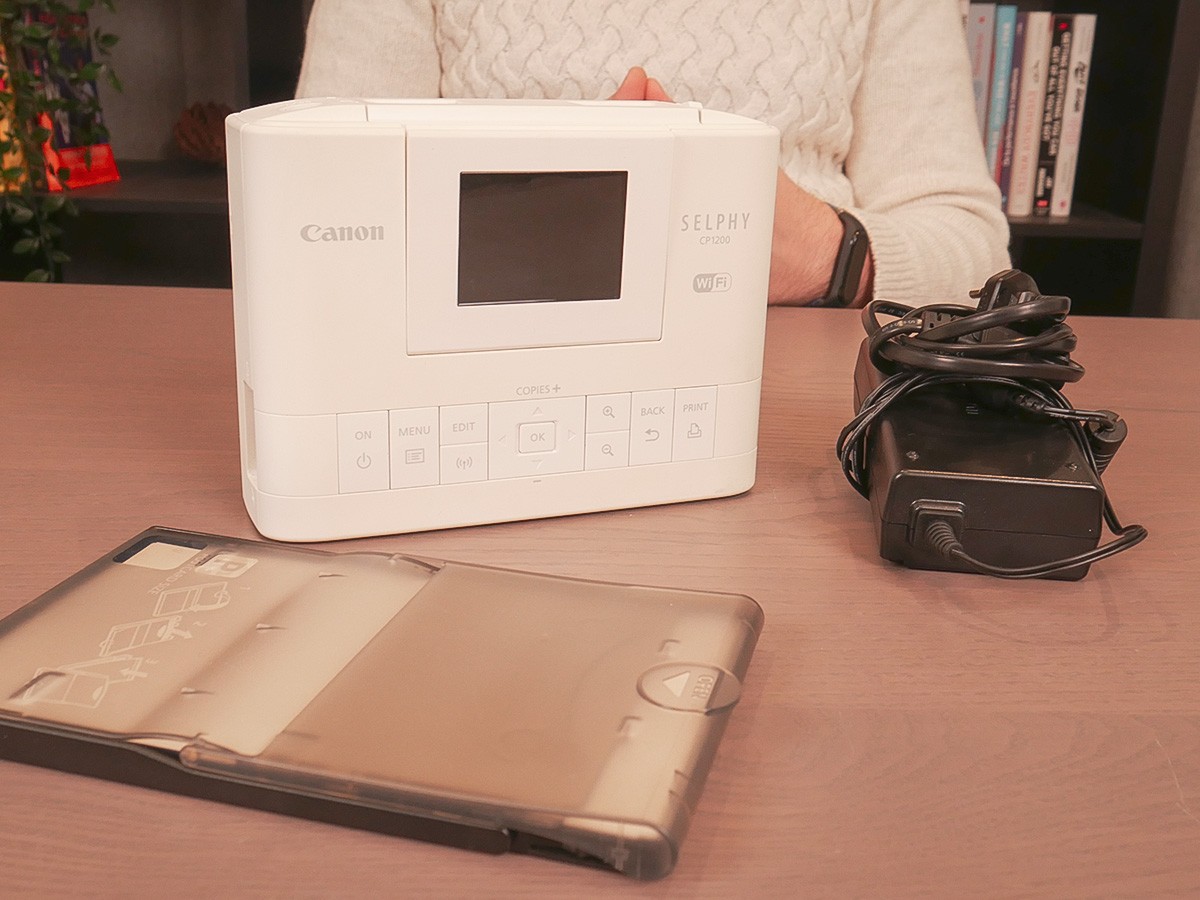
- Print quality: this depends on the type of technology used and the colorimetry, which is supposed to offer good color rendition. The average delta E measurement represents the difference between the original color and the rendered color. The smaller the number, the more faithful the colorimetry. A delta E below 3 offers a difference invisible to the human eye.
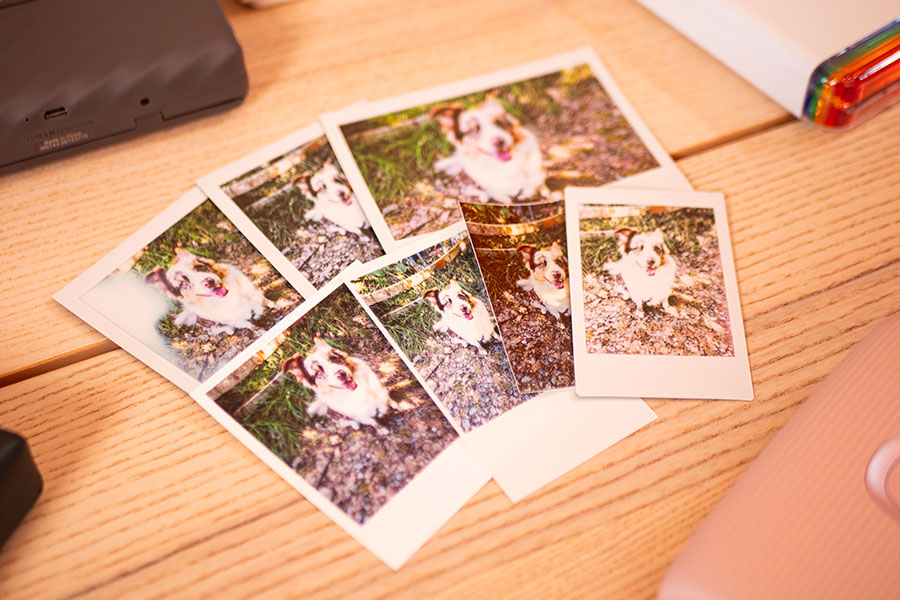
- The format : this refers to the device’s print size. The classic photo size is 10 x 15 cm, but some printers also print A4, A3 and many other formats.
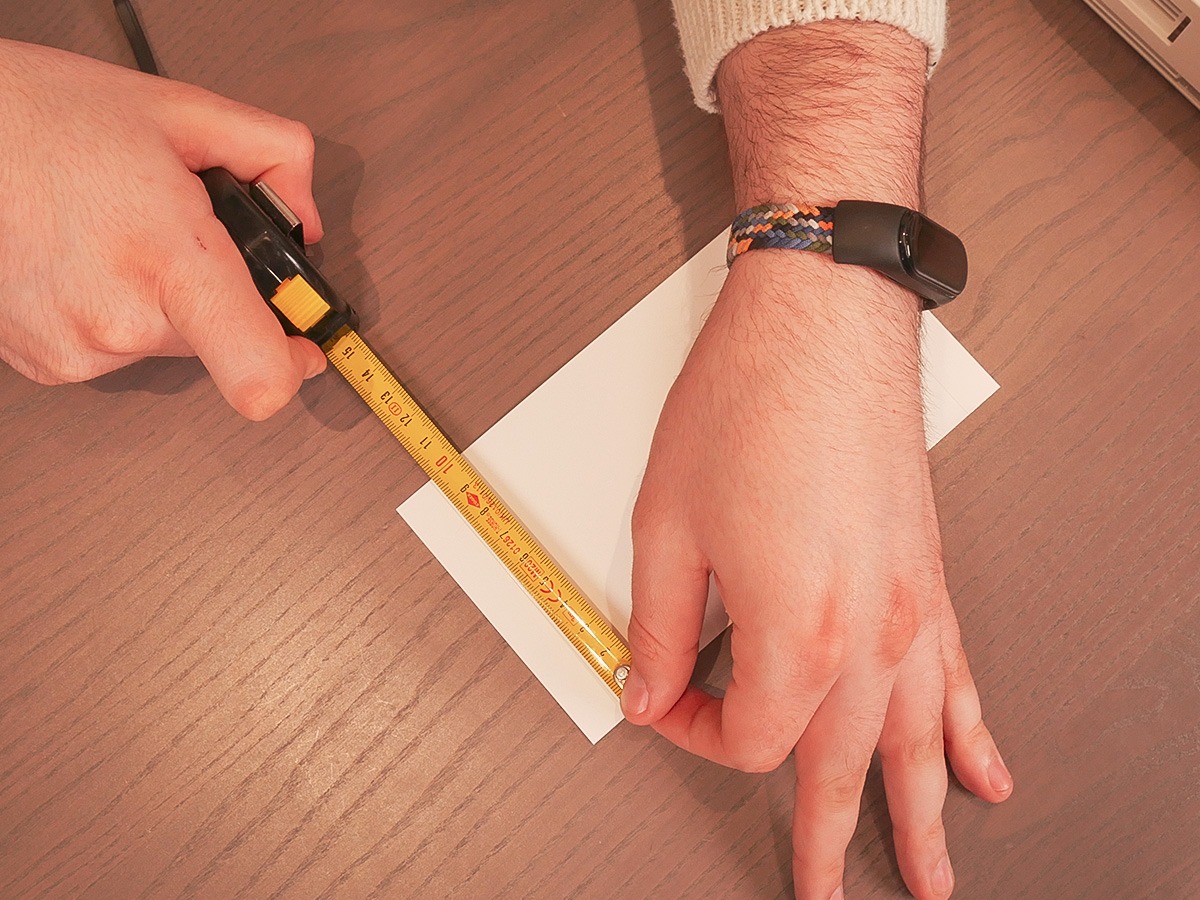
- Paper type : this will influence the quality of finishes. Many support glossy paper, but also matte. Of course, there’s always the possibility of using grainy, smooth, fragile or thick paper… Make sure you know which paper your machine supports.
- Options : most printers dedicated exclusively to photo printing give you access to a multitude of options for editing your images, often via a smartphone app, so that the device needs fewer buttons and thus takes up less space (easier to transport). This is less often the case with inkjet printers, which are heavier and non-nomadic, but offer more printing possibilities (paper type, format…).
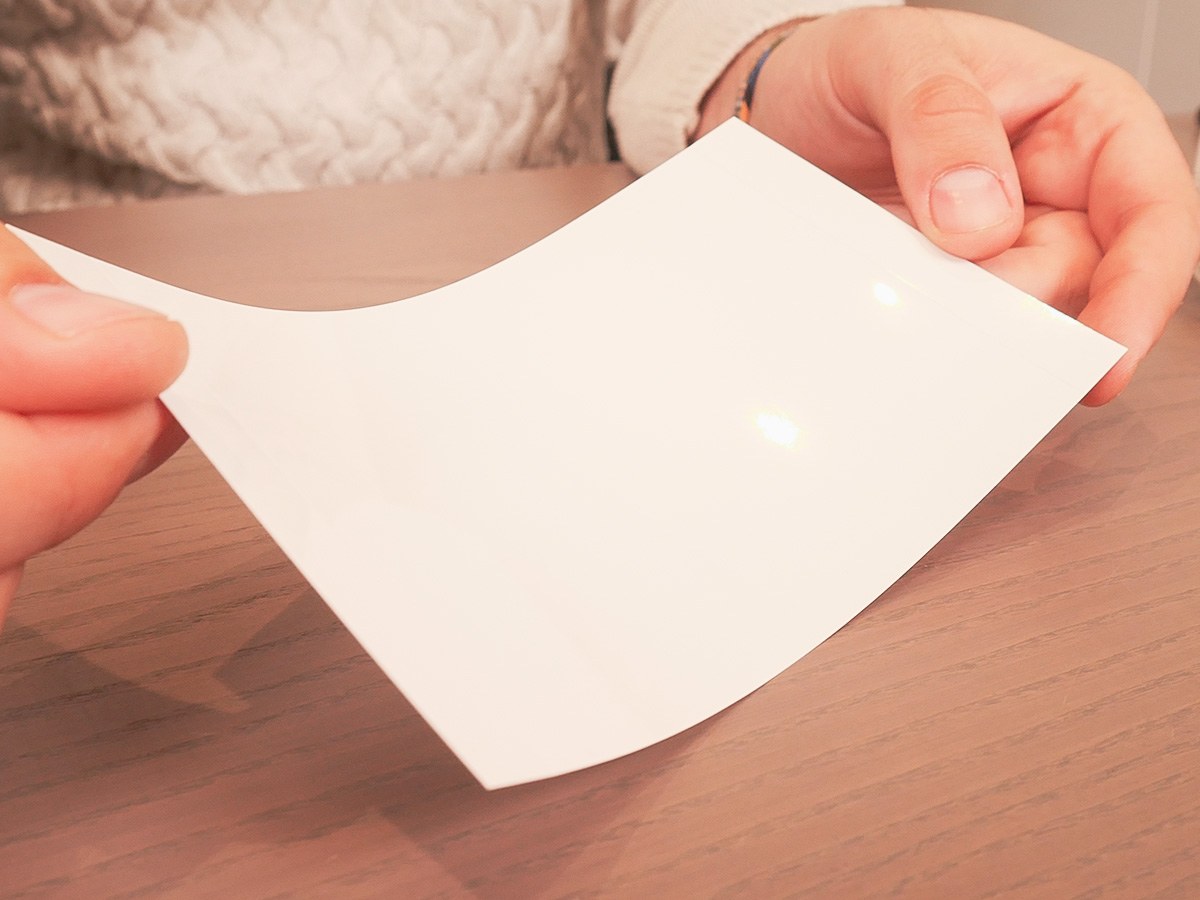
- The cost per print : if the cost per photo is very easy to calculate for dedicated photo printers, it becomes a little more complicated for inkjet printers, as it depends on several factors such as the type of paper, the format used, ink consumption… You can still get an idea by looking at the autonomy estimates provided by the manufacturer or determined by tests and comparing them with the prices of compatible ink cartridges.
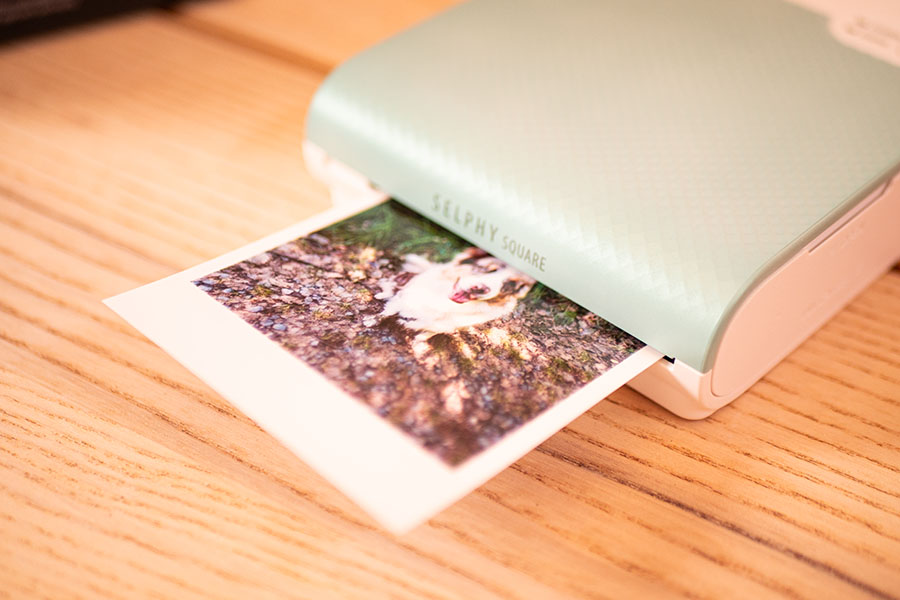
- Connectivity : most dedicated photo printers can be connected to a computer via a USB cable, but they’re designed to stand alone. Almost all new models today come with a Wi-Fi connection, sometimes an Ethernet port and/or the option of inserting a USB stick or external hard drive, an SD card or printing via a cloud storage service. Many can print directly from a smartphone or tablet.
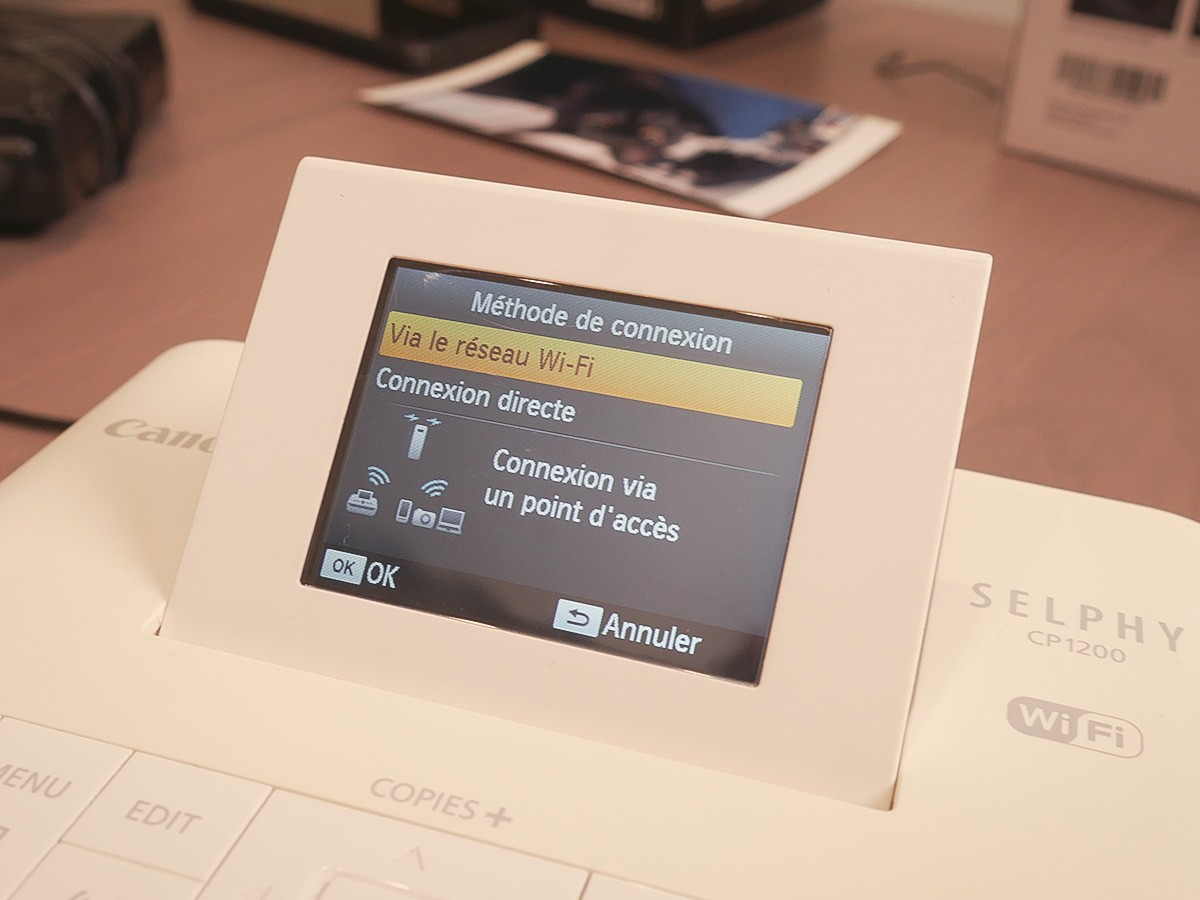
- Printing speed: this can be important depending on the context. If you’re going to produce a large print run, it’s best to get the photos out quickly. On this subject, also check that your machine doesn’t suffer from heatstroke because, depending on the printing technique, you may need to take the time to cool it down after a few photos.
- The “pluses”: these encompass, for example, the presence of a touch screen or not, ease of ink refilling, etc.

Other portable photo printers we recommend
Polaroid Hi Print (€97.99 at time of publication): A safe bet, but not beyond reproach. This dye-sublimation model is easy to carry with its fairly small format. In terms of results, photos are a little brighter than on the smartphone, but still decent, and sharpness is also satisfactory. We did note the presence of a few print lines at the edge of some images, but you need a keen eye. The side paper compartment was easy to open and fill. Pocket-sized photos are self-adhesive and benefit from a protective layer, but no paper is supplied on delivery. The detachable border makes it possible to add a caption or a word, or to obtain a borderless print. On the other hand, the price of the paper is rather high (€0.84/unit). During our test, we found the polaroid Hi-Print application easy to get to grips with, and you have a few options at your disposal, albeit fewer than on other models (no collage, no Print AR, no sound or video photos). Moreover, printing is a little slower (over 1 min), and we criticize its poor autonomy (only 20 prints) as well as its somewhat outdated micro-USB charging port.
Canon Selphy Square QX10 (€119.00 at time of publication): A simple but fast printer with good print quality. Available in 4 colors, this square-shaped transportable machine offers excellent print quality with more faithful colorimetry and very correct sharpness (despite a blue line observed on the side of an image). What’s more, we’d like to highlight its good print speed (around 45 seconds in our test). The photos are self-adhesive, and you can choose between 3 different border sizes, thus varying the size of the images. A print costs around €0.80. With a capacity of 10 films, the compartment is easy to open and fill. Overall, we found it easy to use. Even so, we deplore its poor autonomy (only 20 photos) and the application offers slightly fewer options than the others (although you can still do retouching, layouts and collages).
Other portable photo printers tested
Xiaomi Mi Portable (€54.95 at time of publication):Affordably priced, it’s compact and has some fun, creative features on its app. Unfortunately, its print quality is disappointing, particularly in terms of colors, which are far too lightened and not at all faithful to the original image. We also deplore its poor autonomy.
Kodak Step (€93.13 at time of publication): Its small, lightweight format is easy to carry around, the cost per photo is competitive, and printing is pretty fast. However, there are a few bugs in the app, which prevented us from accessing some editing options (stickers, collages, etc.). Autonomy isn’t great either (25 prints).
HP Sprocket (€99.99 at time of publication): Very compact and lightweight, this printer is aesthetically very pretty. Nevertheless, photos are a shade darker than on the smartphone, and there’s too much sharpness for our taste. Moreover, the application is slow and even has bugs, preventing us from accessing all its creation options.


